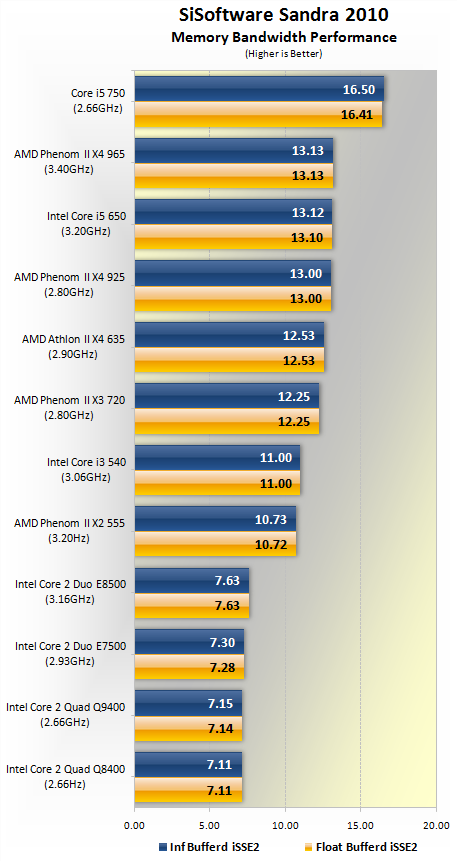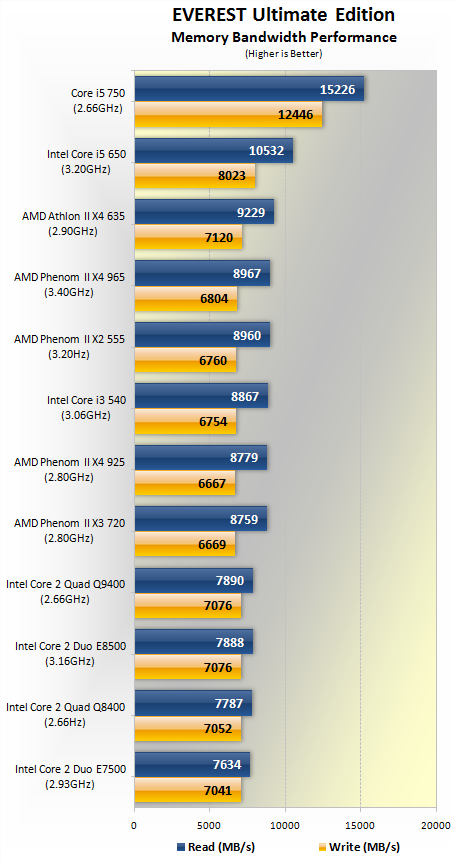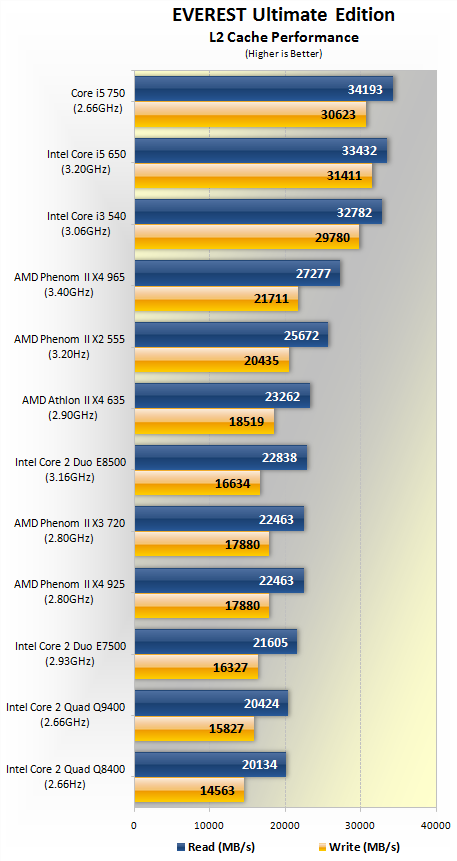Memory Bandwidth Performance

Although every configuration is using dual-channel DDR3-1333 memory and the same CAS7-7-7-20 timings, we see that bandwidth varies from processor to processor, in some cases quite a lot. The Core i5 750 is the only quad-core LGA1156 processor and as a result it produced the highest memory bandwidth with 16.5GB/s.
The AMD Phenom II X4 965 was next in line with 13.1GB/s, which was matched by the Core i5 650, while the lower clocked Phenom II X4 925 produced 13GB/s. The dual-core processors were noticeably slower, though the Core i3 540 and Phenom II X2 555 did quite well with a bandwidth of roughly 11GB/s.
The old LGA775 processors which do not feature an on-die memory controller were by far the weakest performers in the SiSoftware Sandra 2010 memory bandwidth test. The Core 2 Duo and Core 2 Quad processors all delivered around 7GB/s of bandwidth.

Using EVEREST Ultimate Edition to measure bandwidth performance we find that the results are quite different from those recorded with SiSoftware Sandra 2010. While the Core i5 750 is still the best performer, here the Core i5 650 overtook the Phenom II X4 965. In fact, somehow even the Athlon II X4 635 managed to beat the Phenom II X4 965, though there was very little in it and the results could have likely gone either way.
The Athlon II and Phenom II processors all produced similar results regardless of the number of cores and operating frequency. The older Core 2 Duo and Core 2 Quad processors provided better write performance, while the read bandwidth was slightly lower.

L2 cache performance of the Core i3 and Core i5 processors is far superior to that of the competition. The Phenom II and Athlon II processors also managed to outgun the Core 2 Duo and Core 2 Quad processors for the most part in this test.